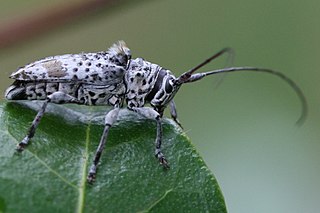
The Curta is a hand-held mechanical calculator designed by Curt Herzstark. It is known for its extremely compact design: a small cylinder that fits in the palm of the hand. It was affectionately known as the "pepper grinder" or "peppermill" due to its shape and means of operation; its superficial resemblance to a certain type of hand grenade also earned it the nickname "math grenade".

Samo founded the first recorded political union of Slavic tribes, known as Samo's Empire, ruling from 623 until his death in 658. According to Fredegarius, the only contemporary source, Samo was a Frankish merchant who unified several Slavic tribes against robber raids and violence by nearby settled Avars, showing such bravery and command skills in battle that he was elected "King of the Slavs". In 631, Samo successfully defended his realm against the Frankish Kingdom in the three-day Battle of Wogastisburg.

The West Slavs are Slavic peoples who speak the West Slavic languages. They separated from the common Slavic group around the 7th century, and established independent polities in Central Europe by the 8th to 9th centuries. The West Slavic languages diversified into their historically attested forms over the 10th to 14th centuries.
The Early Middle Ages in Romania started with the withdrawal of the Roman troops and administration from Dacia province in the 270s. In the next millennium a series of peoples, most of whom only controlled two or three of the nearly ten historical regions that now form Romania, arrived. During this period, society and culture underwent fundamental changes. Town life came to an end in Dacia with the Roman withdrawal, and in Scythia Minor – the other Roman province in the territory of present-day Romania – 400 years later. Fine vessels made on fast potter's wheels disappeared and hand-made pottery became dominant from the 450s. Burial rites changed more than once from cremation to inhumation and vice versa until inhumation became dominant by the end of the 10th century.

The Antes or Antae were an early Slavic tribal polity of the 6th century CE. They lived on the lower Danube River, in the northwestern Black Sea region, and in the regions around the Don River. Scholars commonly associate the Antes with the archaeological Penkovka culture.
Florin Curta is a Romanian-born American archaeologist and historian who is a professor of medieval history and archaeology at the University of Florida.
Zicídeva was an Early Byzantine town, tentatively identified with the late antique settlement excavated on the top of Tsarevets hill, near modern Veliko Tarnovo in northern Bulgaria.

Disterna is a genus of longhorn beetles of the subfamily Lamiinae.

Disterna plumifera is a species of beetle in the family Cerambycidae. It was described by Francis Polkinghorne Pascoe in 1859. It is known from Australia.
Disterna tasmaniensis is a species of beetle in the family Cerambycidae. It was described by Stephan von Breuning in 1982. It is known from Tasmania.
Disterna similis is a species of beetle in the family Cerambycidae. It was described by Stephan von Breuning in 1939. It is known from Australia.
Disterna complexa is a species of beetle in the family Cerambycidae. It was described by Francis Polkinghorne Pascoe in 1859. It is known from Papua New Guinea.
Disterna cuneata is a species of beetle in the family Cerambycidae. It was described by Francis Polkinghorne Pascoe in 1863. It is known from Australia.
Disterna canosa is a species of beetle in the family Cerambycidae. It was described by Wilhelm Ferdinand Erichson in 1842. It is known from Australia including Tasmania.
Disterna mastersii is a species of beetle in the family Cerambycidae. It was described by Francis Polkinghorne Pascoe in 1871. It is known from Australia.
Disterna atrofasciculata is a species of beetle in the family Cerambycidae. It was described by Per Olof Christopher Aurivillius in 1916. It is known from Papua New Guinea.
Disterna forrestensis is a species of beetle in the family Cerambycidae. It was described by Keith Collingwood McKeown in 1948. It is known from Australia.
Disterna maculata is a species of beetle in the family Cerambycidae. It was described by Keith Collingwood McKeown in 1938. It is known from Australia.
Disterna norfolkensis is a species of beetle in the family Cerambycidae. It was described by Keith Collingwood McKeown in 1938. It is known from Australia.
The history of Christianity in Hungary started in the Roman province of Pannonia, centuries before the arrival of the Magyars, or Hungarians.





